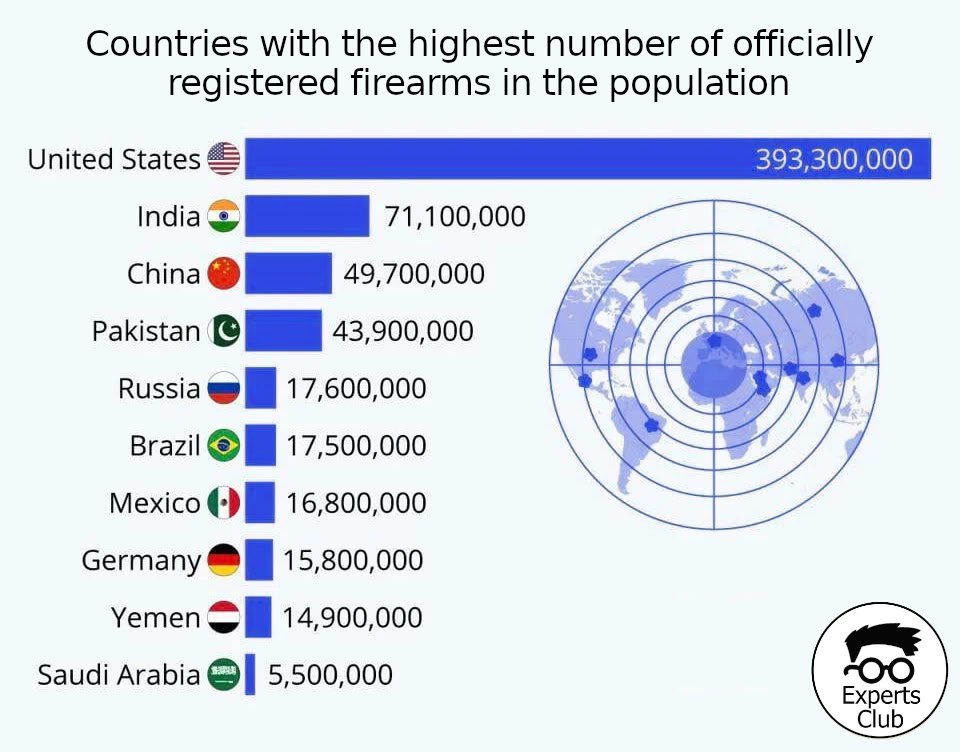
In September 2025, there was an annual peak in the granting of temporary status to Ukrainian citizens in European Union countries, according to Eurostat.
“In October 2025, EU countries issued 74,175 new decisions on granting temporary protection. This is the second highest monthly figure in 2025 after the peak recorded in September (79,525). These high figures are the result of a decree by the Ukrainian government, adopted at the end of August 2025, which grants men aged 18 to 22 inclusive the right to leave Ukraine without hindrance,” the report says.
As of October 31, 2025, Ukrainian citizens accounted for more than 98.4% of those who received temporary protection in the EU. Adult women accounted for 43.8% of those who received temporary protection. Minors accounted for almost a third (30.8%), and adult men for just over a quarter (25.5%) of the total number
. As of October 31, 2025, a total of 4.3 million non-EU citizens who fled Ukraine had temporary protection status in the EU. Compared to the end of September 2025, the total number of persons from Ukraine under temporary protection decreased by 6,170 (-0.1%).
The EU countries that received the largest number of persons from Ukraine under temporary protection were Germany (1,229,960 persons; 28.6% of the total number in the EU), Poland (965,005; 22.5%), and the Czech Republic (393,005; 9.1%).
CZECH REPUBLIC, GERMANY, POLAND, TEMPORARY PROTECTION, UKRAINIANS

The number of Ukrainians planning Christmas and New Year shopping has increased over the year from 65% to 75%, despite the fourth year of full-scale war, according to Deloitte Ukraine’s “Holiday Shopping 2025” survey, provided by the company’s press service.
“This year, we see that preparations for the holidays are becoming more thoughtful and forward-looking: Ukrainians are planning their purchases earlier, approaching spending more cautiously, and more often choosing things that have personal significance for them and their loved ones. For 51% of respondents, the process of preparing gifts remains a pleasant ritual rather than a source of stress. Such familiar concerns help us today to support ourselves and those around us,” notes Alexander Yampolsky, head of retail and wholesale distribution at Deloitte Ukraine.
However, according to the survey results, more and more Ukrainians are also choosing to celebrate at home—68% compared to 54% in 2024. More and more Ukrainians are starting their holiday shopping early: 18% before December, while the main shopping period is December 1-24 (62%).
For the fourth year in a row, Ukrainians are not increasing their spending: 46% are willing to spend no more than a quarter of their monthly income on shopping, and 54% plan to spend between UAH 1,000 and UAH 5,000, with holiday purchases focused on family (88%) and friends (40%). At the same time, young people are more likely to deviate from the traditional scenario: 49% buy gifts for themselves.
Ukrainians most often do their holiday shopping in large and medium-sized supermarket chains (43%), with online stores consistently ranking second (27%) and cosmetics stores (21%) remaining popular due to the demand for gifts “for themselves and their loved ones.”
The most popular tools for choosing gifts are wish lists (46%), price comparison services (54%), and online reviews (50%). Recommendations from influencers play a much smaller role, with only 9-10% of respondents relying on them. And only 10% of respondents believe that the presence of an AI assistant on retailers’ online platforms would make it easier to select holiday gifts.
It is emphasized that shoppers are most upset by the lack of available products (27%), excessive advertising (22%), and inconvenient search filters (14%).
At the same time, 64% of Ukrainians plan to allocate part of their holiday budget to charity, and 8 out of 10 primarily support Ukrainian defenders on the front lines.
“The holiday habits of Ukrainians reflect not only consumer trends, but also deeper internal changes. The way people give gifts, celebrate, and seek joy is now an important part of their emotional stability. Even during the war, Ukrainians remain a community that helps, shares, and creates a festive atmosphere for each other,” Yampolsky concluded.
The study was conducted using a multi-stage stratified sample representing the population of Ukraine by gender, age, size of settlement, and type of employment. Data was collected through an online survey using a quota sample that corresponds to the socio-demographic profile of the Ukrainian population. In total, more than 1,000 respondents took part in the survey.

Consumer priorities of Ukrainians have changed, since the beginning of the full-scale war, 47% of respondents have reduced spending on the main categories of consumption, according to the press service of Gradus.
At the same time, 85% noted that they try to maintain a mental balance, allowing themselves occasions for joy and pleasure. This trend is most pronounced in the 25-34 age group, while people 45-55 and 55+ years old are more inclined to save money.
Regarding methods of reducing spending, 82% avoid unnecessary things but do not deny themselves things that bring pleasure, 77% try to buy fewer things but better quality, 76% invest in health, 59% are willing to spend on things that improve emotional well-being and 52% direct funds to development and experience (study, travel).
Ukrainians consider health and medical services to be the most important item of expenditure that should not be saved on (70%).
As for expectations from fashion & beauty-brands – Ukrainians now put quality and durability of things in the first place (39%), and prestige – in the last place (11%).
As for luxury goods, the opinions of respondents are divided. Restraint in buying such things was reported by 32% of respondents. The answer options “it is an excess, which is out of time now” and “are not interested in luxury goods at all” were chosen by 22% and 18% respectively. At the same time, 19% of respondents called luxury goods “a component of normal life, which allows you not to lose yourself”.
In general, women are less inclined to reduce spending on most categories. The reluctance to save money on things that are important to themselves was reported by 61% of women and 47% of men, while goods that improve emotional well-being continue to be purchased by 70% of women and 50% of men.
The research “Consumer pragmatism: how the war has changed our consumption” was conducted by research company Gradus in partnership with Vogue Ukraine specially for the Forces Of Fashion 2025 conference, by self-completion of the questionnaire in the Gradus mobile application. Target audience: men and women aged 18-60 with an above average income, living in Ukrainian cities with a population of more than 50 thousand people, excluding temporarily occupied territories and zones of active hostilities. The field stage lasted from August 25-27, 2025. Sample size: 600 respondents.

The global ranking of armed populations, compiled on the basis of the Small Arms Survey, shows that the ten countries with the largest number of civilian weapons include the United States, India, China, Pakistan, Russia, Brazil, Mexico, Germany, Yemen, and Saudi Arabia. Ukraine is not on this list, but even before Russia’s full-scale invasion, the country was among the states with a significant amount of weapons in the hands of citizens. The Experts Club Analytical Center analyzed global and Ukrainian statistics.
According to the Small Arms Survey for 2017-18, there were about 4.4 million civilian weapons in Ukraine—approximately 9.9 guns per 100 inhabitants. Of these, only about 800,000 were officially registered, and about 3.6 million belonged to the illegal segment.
According to the National Police database, as of July 31, 2018, there were 892,854 registered weapons in the country. In 2021, the Ministry of Internal Affairs estimated the number of weapons legally owned by citizens at approximately 1.3 million, against the backdrop of tighter regulations and growing public interest in self-defense after 2014.

The full-scale war of 2022 dramatically changed the picture. Against the backdrop of the formation of territorial defense and volunteer units, the state massively transferred small arms to citizens; at the same time, a significant number of captured and illegal firearms ended up in the hands of the population. Estimates today vary widely: according to Interior Minister Ihor Klymenko, Ukrainians may have between 1 and 5 million weapons, while a number of think tanks put the figure at 4–5 million, of which 2–3 million may be in illegal circulation.
Research by Small Arms Survey using sociological surveys shows that up to 11% of Ukrainian households may have at least one weapon, which on a national scale gives a range of 865,000 to 1.42 million armed households. At the same time, the share of households that openly report the presence of weapons in 2023–2024 remains at 5–6%, which indicates both a high level of distrust and the sensitivity of the issue in wartime.
To bring order, Ukraine has launched a Unified Weapons Register. By July 2024, 63% of households that own weapons stated that some or all of their weapons were registered; among those who are aware of the system, 74% claim to have registered all their weapons, but about 10% continue to keep unregistered weapons.
Thus, while before the war there were approximately 1.3 million registered weapons in Ukraine and several times more illegal firearms, now, against the backdrop of full-scale hostilities, there are millions of weapons, a significant portion of which must gradually be registered or confiscated.
This makes the issue of civilian weapons control one of the key issues for post-war security, law enforcement reform, and Ukraine’s negotiations with the EU on the harmonization of weapons legislation.
Source: https://expertsclub.eu/ukrayina-na-tli-svitovogo-rynku-czyvilnoyi-zbroyi/

From the beginning of next year, the Louvre Museum in Paris will significantly increase the cost of admission tickets for most visitors from countries outside the European Union and the European Economic Area (EEA). This was reported by Euronews Serbia and the Serbian newspaper Politika, citing a decision by the museum’s board and BBC reports.
From 14 January 2026, tickets for tourists from countries outside the EU and the EEA (which, in addition to EU countries, includes Norway, Iceland and Liechtenstein) will increase in price from €22 to €32, i.e. by 45%.
The new rates will apply, in particular, to citizens of the United States, the United Kingdom, China, and all countries that are not members of the EU or the EEA – the countries of the Western Balkans (including Serbia, Montenegro, North Macedonia, Albania, Bosnia and Herzegovina), Ukraine, Russia, Turkey, the Middle East, Africa, Latin America and most of Asia.
According to the Louvre itself, the museum was visited by about 8.7 million people in 2024, of whom approximately 69% were foreign tourists; more than 10% of the flow was accounted for by US citizens, and about 6% by Chinese visitors. The French authorities and the museum’s management expect that the price increase for non-Europeans will bring in tens of millions of euros in additional revenue, which will be used to strengthen security and carry out a large-scale renovation of the building and exhibition spaces.

Citizens of Ukraine and Russia are among the top ten foreign buyers of housing in Bulgaria in 2024–2025, according to a study by the Experts Club analytical center and data from the Bulgarian Real Estate Association.
According to the study, the top 10 countries whose citizens are most active in buying real estate in Bulgaria are: Great Britain, Germany, Greece, Israel, Romania, Turkey, Italy, Russia, Ukraine, and Poland.
Foreigners account for a significant share of transactions in the housing market. According to one international analytical resource, the number of foreign buyers of residential real estate in Bulgaria in 2024-2025 has increased by approximately 18%, and the overall market is showing steady price growth. According to local experts, the percentage of foreigners in some coastal projects may reach 30% of the total number of buyers.
Foreign buyers are most interested in properties on the Black Sea coast – in Varna, Burgas, and Nessebar – as well as in the mountain resorts of Bansko and Pamporovo, where real estate is considered both for personal use and as an investment for rental.
Analysts note that Ukrainians have firmly established themselves in the top 10 due to a combination of relocation and investment demand: some buyers view Bulgaria as a safe EU jurisdiction during the war, while others see it as an opportunity to earn income from renting out property in tourist regions.
The growth in foreign demand is supporting price increases: over the past year, the cost of housing in Bulgarian seaside resorts has risen by an average of 8-10%, and in Sofia by 7-10%.
At the same time, according to estimates by the European Commission and a number of analytical reviews, housing in Bulgaria in 2025 is overvalued by approximately 10-15% relative to fundamental indicators, but experts are not yet talking about a critical “bubble” in the market.
In the next 2–3 years, Experts Club analysts expect foreigners to keep showing interest in Bulgarian real estate, but with a change in the demand structure: they estimate that the share of buyers from the EU, Ukraine, and Israel will grow, while the role of Russian buyers in new deals may continue to decline amid sanctions and capital movement restrictions.
According to data from the National Statistical Institute of Bulgaria and international reviews, in the second half of 2024, housing prices in the country rose by 15% year-on-year and by 87% compared to 2015. At the same time, the average price per square meter in the country remains significantly lower than in most EU countries, making Bulgaria one of the most affordable real estate markets in the Union for foreign investors.
Russian citizens traditionally account for a significant share of owners, especially on the coast. According to Bulgarian sources, in the Burgas region alone, more than 5,200 properties owned by Russians are officially registered, while across the country as a whole, there are several tens of thousands of properties. At the same time, in recent years, the share of new purchases by Russians has been declining, and some of the properties are being put on the market and bought by Bulgarian and Western European buyers.
Source: https://expertsclub.eu/rynok-zhytla-bolgariyi-analiz-vid-experts-club/